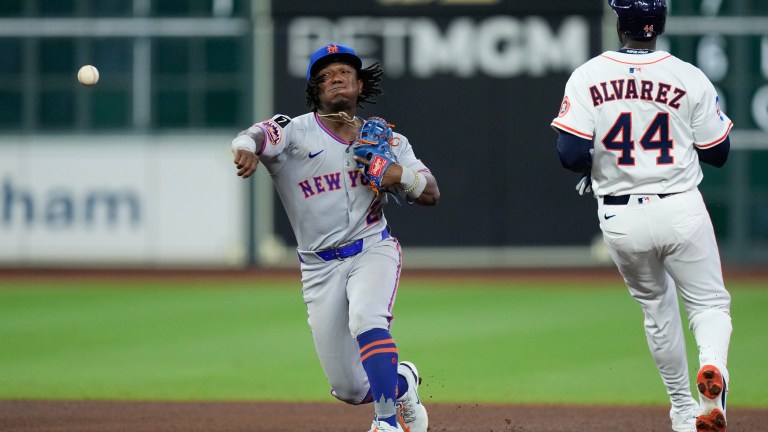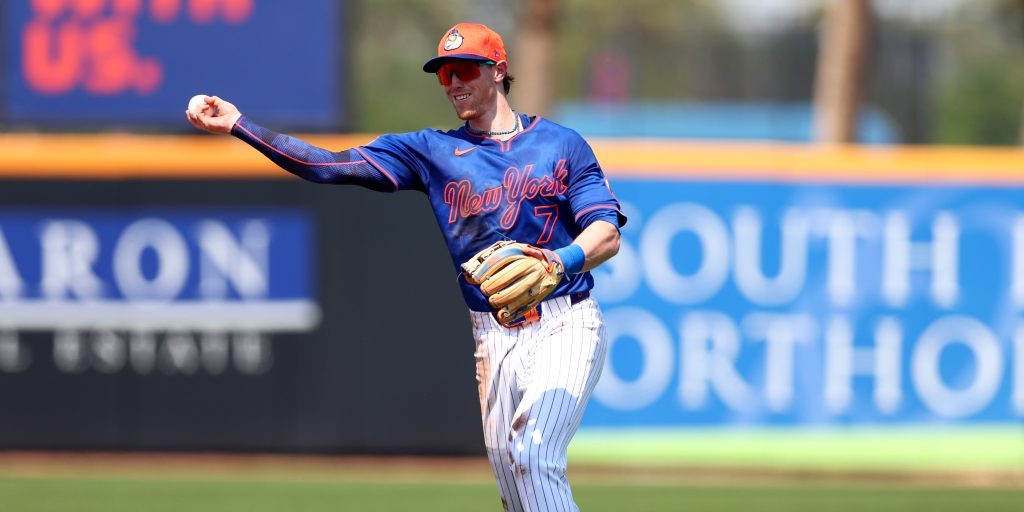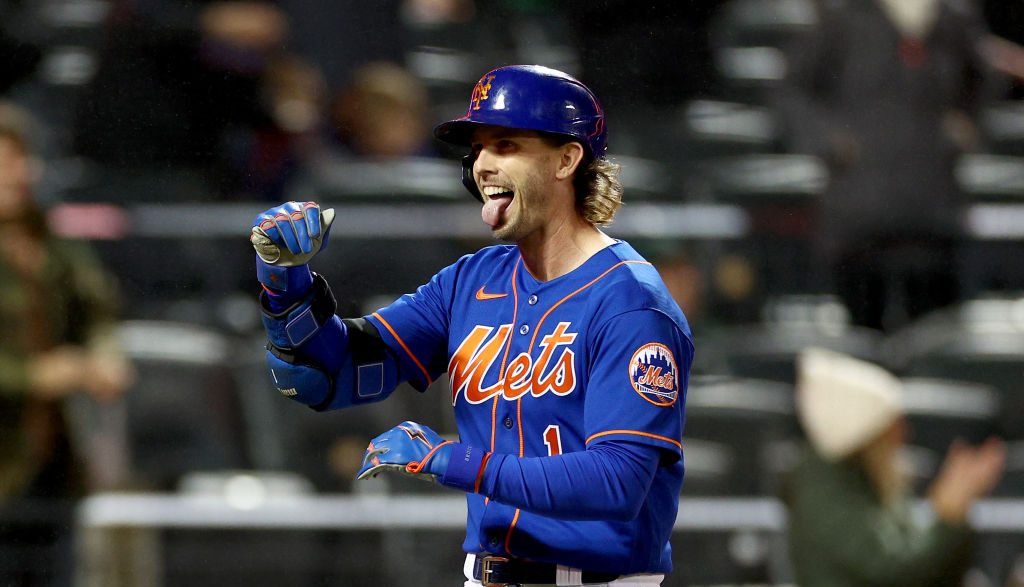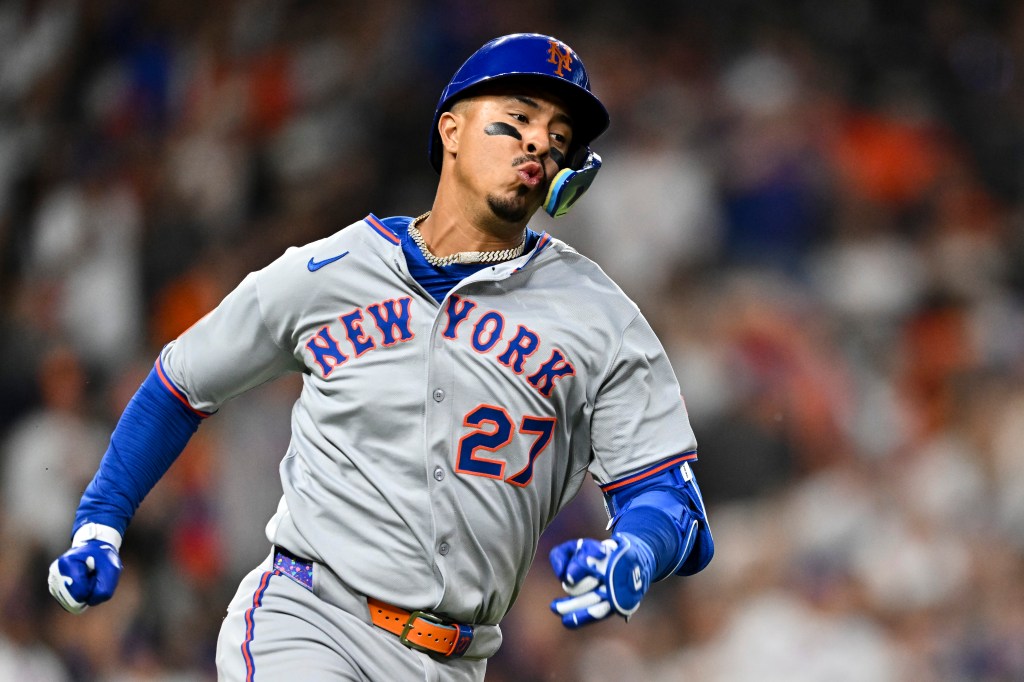Which Infield Combo Will the Mets Settle On for 2025?
The Mets have an embarrassment of riches on the infield. How will they deploy these five players throughout the remainder of the year?

A little more than two months into the 2025 MLB season, many parts of the New York Mets‘ roster have worked according to plan.
Despite two major injuries to key offseason acquisitions, the starting rotation has found a way to be among the top units in the game. Additionally, the combination of Edwin Díaz, Reed Garrett, and Huascar Brazoban has made New York especially difficult to beat in the late innings.
While Juan Soto is yet to hit his full stride — despite a recent hot streak — he has played well enough in conjunction with Tyrone Taylor and Brandon Nimmo to create a solid outfield trio.
The one area of the roster that has been constantly changing is the infield, and not necessarily out of necessity. While Francisco Lindor’s fractured pinky toe could have created a hole at shortstop, the superstar is playing through the pain.
For the time being, third baseman Mark Vientos is on the shelf with a hamstring strain, but should be back within a few weeks. Upon his return, manager Carlos Mendoza will have six players to join first baseman Pete Alonso in the infield.
Along with those three, the Mets have another four infielders on the big league roster, creating a plethora of options to pick from. Given that Lindor will continue manning shortstop, let’s look at the other five options and see which arrangements could make the most sense for New York.
Brett Baty

Considering Brett Baty is in his fourth season as a big leaguer, it is easy to forget that he is still just 25 years of age. After looking like a complete bust for three years, he won a spot on the big league roster with a big spring training, but quickly lost that job after posting an OPS of .597 over his first 19 games.
When Jesse Winker strained his oblique on May 4, Baty got another shot and ran with it.
Since his recall, Baty has raised his full-season OPS by more than 100 points, posting a .766 clip in 29 games. Most notably, between May 21 and 31, Baty slashed .367/.441/.567 for an OPS of 1.008 while going 11-for-30. He mixed in a double, a triple and a home run, along with nine RBIs.
After being billed as a defensive liability early in his career, Baty has taken huge strides in the field. Logging time at both second and third base, his two outs above average place him in the 86th percentile leaguewide.
Baty is the Mets’ best defensive option at the hot corner even when Vientos is healthy, a characteristic that will net him consistent playing time, although his OPS against righties is nearly 200 points higher than his total against southpaws.
This, along with his .857 OPS with runners in scoring position — many of the Mets’ higher-profile bats have struggled in high-leverage spots — figures to make Baty an everyday option, at least against right-handed arms.
Jeff McNeil

While Jeff McNeil is not the player he once was, he continues to make an impact for the Mets. Three years removed from a batting title, McNeil has become a new type of hitter, and with the help of a torpedo bat, has posted an OPS+ of 154 in 35 games.
His season got off to a delayed start after he suffered an oblique strain in spring training, but since he returned, he has posted an uncharacteristic .533 slugging percentage – the highest of his career.
Even more out of the ordinary, McNeil — who owns a .288 career batting average — is hitting at just a .257 clip this year. However, he is still a tough strikeout, with just 9.7% and 12.1% strikeout and whiff rates, respectively.
McNeil has lost a step defensively but still can play second base, as well as all three outfield positions.
The fact remains that the “Flying Squirrel” is not the player he once was. However, he can still be a valuable piece for the Mets. Versatility and high contact are still valuable skills on teams across the league, and McNeil is certainly capable of providing the Mets with that. Moreover, if he keeps hitting for this much power, it will be hard for Mendoza to ever take him out of the lineup.
Mark Vientos

Prior to Vientos’ recent injury, he was posing the Mets with an interesting dilemma. Last year, he enjoyed one of the best breakouts in the game, as the third baseman had an OPS of .837 and left the park 27 times in the regular season. On top of that, Vientos had the best postseason of any Met, posting a .998 OPS and hitting five bombs in 13 playoff games.
His 2025 has been the complete opposite. Vientos’ batting average has dropped 36 points thus far to a measly .230, while he has seemingly been sapped of his prodigious power. After slugging .516 last year, his slugging percentage has been nearly cut in half at .380, while just 15 of his 43 hits have gone for extra bases.
On one hand, the smart option would be to give Vientos time to figure it out once he returns from the injured list. However, his defense at third is still a major problem.
After posting -7 OAA in 108 games last year at third base, he has already accumulated the same total in just 41 games at the hot corner this year. With J.D. Martinez out of the picture in 2025, Mendoza can utilize Vientos as a DH, but with the subpar offensive numbers, even that cannot be completely justified at this point.
Until Vientos returns, New York will get a chance to see others audition for his role, but upon his return, the pressure will be on the 25-year-old slugger to regain his stardom from last season.
Luisangel Acuña and Ronny Mauricio
Luisangel Acuña and Ronny Mauricio are in a similar boat. They’re former top prospects who have endless talent but have not proved it at the MLB level. Nonetheless, both find themselves on the 26-man roster at the time of writing.
Acuña’s value comes from his defense and speed. His sprint speed ranks in the 96th percentile in MLB, while he has played all three infield positions and also gotten a cup of tea in center field. Additionally, he is 11-for-12 when stealing bases. On paper, he is the perfect candidate to pinch run and be used as a defensive replacement.
On the other hand, Acuña is just 23 years old and has under 200 major league at-bats under his belt. This season, his OPS sits at .579, and he has barreled just one ball all season.
It is obvious that the Mets view Acuña as part of their future, but riding the bench until the seventh inning every night does nothing for his development. By the same token, the Mets — a team with World Series aspirations — cannot be playing a .287 slugging percentage every day.
Mauricio is on the other side of this extreme. After being recalled from Triple-A last week, he started twice in the Mets’ series against the Dodgers. In those two games, he went 0-for-8. However, he then went 5-for-11 with a double and a home run in the series against the Rockies.
Mauricio was once the Mets’ top prospect but has had two knee surgeries since his initial stint with the big league club in 2023. In rehabbing this season, he tore up Syracuse, going 17-for-33 (.515) with an OPS of 1.382. He also hit three home runs and stole four bases. Mauricio has incredible power, as demonstrated by his 117-mph double for his first-career hit back in ’23.
Like Acuña, Mauricio is a shortstop by trade, meaning he has had to learn new positions to get around Lindor. He is an option for Mendoza at second and third, but his bat is ahead of his glove.
As with Acuña, sitting on the bench for a rare pinch-hitting opportunity would hinder the 24-year-old’s development, placing pressure on the Mets to at least give him regular reps in Vientos’ absence. Again, the club sees Mauricio as another valuable piece in their logjam of infielders, with the potential to be a serious contributor for years to come.
Which Infield Combination Makes the Most Sense for the Mets?
Truthfully, there is no easy answer to this, especially once Vientos returns. With Lindor and Alonso’s positions safe, that leaves five guys for two spots.
The positive is that Mendoza has a piece for just about any need, meaning that he can mix and match to his liking. If the Mets are in need of power, Vientos, Baty or Mauricio can supply that. Speed and defense calls Acuña’s name, while McNeil is his skipper’s veteran lefty bat.
Offense or Defense?
Another thing to consider is how New York’s infield alignment impacts other areas of the roster. Mets pitchers induce the second-highest percentage of groundballs of any staff in the game. This means it behooves Mendoza to trot out a capable defensive unit.
If we are going strictly on defensive ability, Baty at third and Acuña at second is New York’s best bet. However, that alignment relies on the rest of the team to be able to produce enough offense to cover up a serious liability in Acuña. The Mets already regularly play Taylor, who, despite his other strengths, is not necessarily the toughest out in New York’s starting nine.
In a scenario where Mendoza wants to prioritize infield defense, while getting better offense elsewhere, he can pencil in the Baty/Acuña duo while putting McNeil in center field, sacrificing run-prevention in the outfield.
Say New York is in an offensive slide, Mendoza can use platoon splits to his advantage to put up as many runs as possible. Against righties, some combination of Mauricio, McNeil and Baty would suit them the best, while Vientos and Acuña serve as better options against lefties.
In any event, the DH spot is also an option, as Mendoza has been using that spot on the lineup card as a revolving door. While Starling Marte — an outfielder — has gotten most of his reps this year as a DH, Vientos and Mauricio both serve as strong options to occupy that role. First baseman Jared Young has also gotten time there this year.
Final Verdict
Despite the Mets’ embarrassment of riches, there is no clear answer.
McNeil’s versatility figures to get his bat in the lineup more often than not, whether in the infield or outfield. Once Vientos returns, he will play consistently, albeit likely as a DH most days.
Baty gives Mendoza a solid bat at either second or third, meaning he will be in there on a daily basis at one of the two spots. Acuña’s role as a late-inning weapon on the bases and in the field will likely remain unchanged, while Mauricio’s role after the next few weeks will depend greatly on his performance.
If president of baseball operations David Stearns has shown us anything over his career as an executive about how he prefers to construct a roster, it is that he values versatility and likely will not nail down a definitive infield quartet, but instead will allow Mendoza to mix and match as the season goes along.
